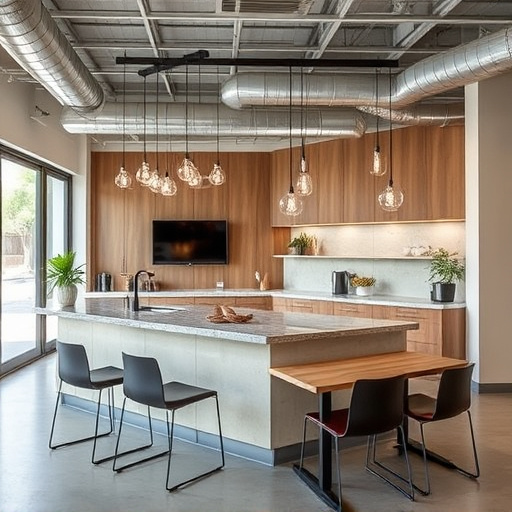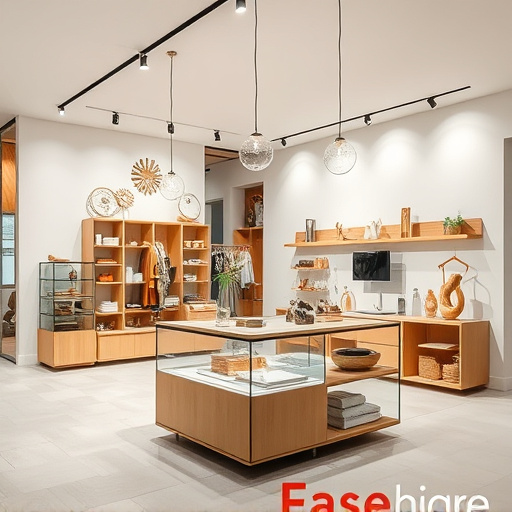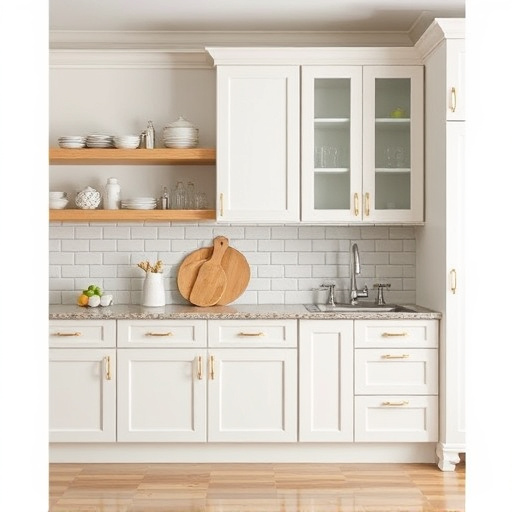Optimizing office interiors with strategic acoustic design enhances productivity and speech clarity. This involves using sound-absorbing materials like panels, fabrics, and area rugs to reduce echo and reverberation. Simple home remodeling techniques such as exterior painting and floor replacement improve sound absorption and transmission reduction between walls. Strategic furniture placement, including movable screens and tall bookshelves, acts as natural sound barriers. These tactics create peaceful, aesthetically pleasing office interiors conducive to effective communication and collaboration.
In today’s collaborative workspaces, understanding and optimizing acoustic performance in office spaces is more critical than ever. This article explores how thoughtful office interior design and simple yet effective upgrades can significantly enhance sound quality, fostering better communication and creativity among employees. Discover practical strategies to transform your office environment into a harmonious blend of functionality and superior acoustics, ensuring every conversation resonates clearly.
- Understanding Acoustic Performance in Office Spaces
- Design Strategies for Better Sound Quality
- Simple Upgrades for Immediate Improvement
Understanding Acoustic Performance in Office Spaces

In the realm of office interiors, acoustic performance is a vital consideration that often goes unnoticed until it becomes a source of disruption. Understanding acoustic performance involves recognizing how sound moves and interacts within a space, from the quiet hum of conversations to the echo of voices in large open-plan areas. Poor acoustic conditions can lead to increased noise levels, affecting concentration, communication, and overall employee well-being.
Effective office design should aim to minimize echo, reverberation, and unwanted noise while promoting clear speech and a peaceful ambiance. This involves strategic placement of furniture, selection of suitable materials, and sometimes even implementing creative solutions like acoustic panels or sound-absorbing carpets. Home remodeling experts suggest that floor replacements and exterior painting can also contribute to improving acoustic performance by addressing issues with hard surface reflections and sound transmission through walls.
Design Strategies for Better Sound Quality

Creating office interiors that prioritize sound quality involves thoughtful design strategies. One key approach is to incorporate acoustic materials such as sound-absorbing panels and fabrics into walls, ceilings, and even furniture. This helps to minimize echo and reverberation, making conversations and meetings more clear and productive. For instance, using custom-designed acoustic paneling in meeting rooms or open-plan spaces can significantly enhance speech intelligibility.
Additionally, strategic placement of plants, soft furnishings, and architectural elements like curved walls or niches can help break up sound waves, preventing them from bouncing around uncontrollably. These design considerations are not just about aesthetics; they contribute to a more comfortable working environment where employees can focus better. Think of it as an investment in both office aesthetics and productivity—a customized work space that integrates smart home improvement services for optimal acoustic performance.
Simple Upgrades for Immediate Improvement

Office interiors play a significant role in enhancing acoustic performance, especially for open-plan spaces where sound can reverberate. Simple upgrades can instantly transform your office environment. One easy and cost-effective solution is to add noise-absorbing materials like acoustic panels or curtains. These innovative products are designed to mitigate echo and reduce background noise, creating a calmer atmosphere that improves concentration.
Furthermore, rearranging furniture and introducing strategic partitions can make a big difference. Consider using movable screens or tall bookshelves to break up large areas, as these can act as natural sound barriers. Even simple adjustments like adding area rugs or employing fabric-backed blinds in windows can significantly dampen unwanted noise, making the space more conducive for focused work and effective communication. Think of it as a bathroom remodel for your office, where smart home improvement services yield immediate results in terms of acoustic comfort.
Office interiors play a significant role in enhancing acoustic performance, creating more productive and enjoyable work environments. By understanding the fundamentals of acoustics and implementing strategic design choices, simple upgrades, and immediate solutions, it’s feasible to reduce noise levels, improve sound quality, and foster better communication among colleagues. These measures not only contribute to increased employee satisfaction but also elevate the overall ambiance of the workspace, making it a more vibrant and collaborative hub.














